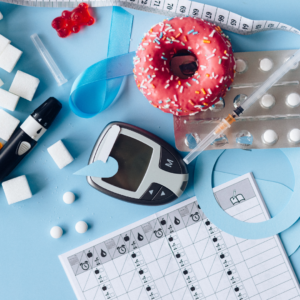When a person begins the weight loss journey, weight loss occurs rapidly but after a few
months it becomes difficult. The weight remains the same and doesn’t change a bit. This
inability to lose weight is known as a weight loss plateau and it can be frustrating and
demotivating.
A person may experience a weight loss plateau because the metabolism has slowed down. A
person will ultimately hit a weight loss plateau and cease losing weight, even when they stick
to a diet and exercise regimen.
According to research, weight loss plateaus occur after roughly six months of low-calorie
diet.
Following are the ways to break the plateau:
1. Decrease Carb Consumption
Reducing carbohydrate intake may help lose. Low-carb diets can stimulate other metabolic
changes that help with weight loss and enhance fat burning. Extremely low-carb diets, as
opposed to other diets, have been found to decrease appetite and increase feelings of fullness.
In addition, they cause the body to produce ketones, which have been shown to reduce
appetite.This may cause the person to eat less, making it easier to begin losing weight again
without hunger or discomfort.
2. Increase Exercise Frequency or Intensity
Altering your exercise routine may help you break through a weight loss stall. Resistance
training seems to be the most effective type of exercise for weight loss .Other types of
physical activity have also been shown to protect against a metabolic slowdown, including
aerobic exercise and high-intensity interval training (HIIT). To boost the metabolic rate,
people who already are exercising can increase the intensity of the workouts.Strength training
in particular can assist counteract the decrease in metabolic rate that occurs following weight
loss.
3. Track The Diet
Tracking the calories and macronutrients that are protein, fat and carbs can provide concrete
information about how much calories are consumed. This may help to modify the diet.
Research suggests that recording food intake may enhance weight loss efforts.
4. Consume Enough Protein
Protein boosts metabolic rate more than fat or carbs. Protein stimulates the production of
hormones that help reduce appetite and makes a person feel full and satisfied. The loss of
muscle mass and a decrease in metabolic rate, both of which frequently happen during weight
reduction, can be prevented by maintaining a sufficient protein intake.
5. Manage Stress
Losing weight might be difficult when under stress. It encourages comfort eating and
awakens desires for food while also raising the body's cortisol (the stress hormone)
production. While it aids the body's reaction to stress, it can also promote the storage of belly
fat. Consequently, overproducing cortisol can make it challenging to lose weight.
6. Intermittent Fasting
Intermittent fasting has become very popular.
It includes going without eating for a long duration of time, typically between 12 to 16 hours.
It may help consume fewer calories, maintain muscle mass and may help preserve metabolic
rate during weight loss.
7. Avoid Alcohol
Alcohol suppresses fat burning and may lead to belly fat accumulation as it provides empty
calories. Alcohol also causes people to overeat and make poor food choices. It is best to avoid
alcohol or consume it in lesser amounts occasionally.
8. Eat More Fibre
Including more fibre in the diet may help break through a weight loss plateau. Fibre slows
down the movement of food through the digestive tract, which can help a person feel full and
satisfied. Fibre may aid weight loss by decreasing the number of calories that is absorbed
from other foods.
9. Drinking Water, Coffee or Tea
Sugary drinks cause weight gain, yet other drinks can help you break through the weight loss
plateau. Drinking water before meals may help people lose weight as it will reduce food
intake. Black coffee and green tea may also benefit weight loss efforts.
10. Adequate Sleep
Not getting enough sleep can lead to weight gain by lowering the metabolic rate and altering
hormone levels to drive appetite and fat storage. To lose weight and optimum health, get 7–8
hours of sleep.
11. Active Lifestyle
While exercising is important, there are other factors that affect the number of calories
burned daily. Physical activity such as fidgeting or changing your posture can increase your
metabolic rate. NEAT refers to non-exercise activities that can significantly affect one's
metabolic rate, although the amount of NEAT required varies from person to person. To
increase your non-exercise activity thermogenesis (NEAT), a simple way is to stand up more
frequently. Thus, active lifestyle increases metabolic rate and thus promotes weight loss.
12. Eating Lots of Vegetables
Vegetables are the ideal food for weight loss. Most veggies have a high fibre content, are low
in calories and carbohydrates, and are packed with healthy elements.
13. Weighing Scale is not the only way to check the Progress
Do not just check the weight by the scale. Monitor the energy levels, the fitting of the clothes
and the measurements of the body too.
Conclusion
Weight loss plateaus cause demotivation and can affect a person’s dedication. However, they
occur in all weight loss journeys and not something to be stressed about. Right strategies can
help break the plateau and again be on the right path of weight loss.







